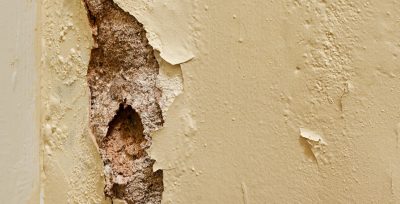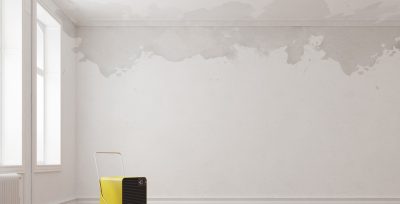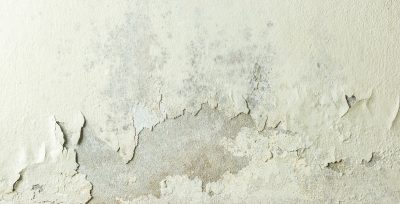A damp proof course (DPC) helps to prevent moisture from entering the property and keeps damp issues at bay. Depending on the nature of the damp problem, the damp proof course could either be horizontal or vertical. Old properties that have no built-in damp-proof membrane (DPM) are especially prone to damp problems. To counter rising damp, the DPC layer is placed at the bottom of the masonry walls (either load bearing or partition) of a house.
Rising damp or penetrating damp is equally devastating. The phenomenon of rising damp causes groundwater to rise upwards. In rising damp, the water rises vertically through capillary action, while in penetrating damp, water penetrates the exterior of the building and makes its way inside. DPC layers are often sealed to the DPM to make the overall sealing more efficient.
What Are the Components of a Damp Proof Course?
So what constitutes a DPC? Given its purpose, it’s generally made up of material that discourages the entry and penetration of moisture. Flexible material such as plastic or felt paper, harder and stiffer materials like slate, cement concrete or waterproof bricks are good water repellents. The DPC is generally embedded at a height of 150 mm above the ground level and is wedged between two layers of blocks or bricks. To ensure that the sealing is more efficient and there is no leakage of damp from the ground, the DPC is used in conjunction with the DPM.
With the passage of time, construction practices have also evolved and so has the nature of materials used in a DPC. Initially, slate tiles formed an essential part of the DPC but today this has given way to plastic and the more robust stainless steel. This has succeeded in pushing down the cost of DPC.
Rising and Penetrating Damp Prevention and Treatment Services in London
- 01Rising & Penetrating DampRead more
- 02What Is Penetrating DampRead more
- 03What is Rising DampRead more
- 04Causes of Rising DampRead more
- 05Causes Of Penetrating DampRead more
- 06Symptoms of Rising dampRead more
- 07Symptoms of Penetrating DampRead more
- 08Rising Damp vs Penetrating DampRead more
- 09Stop Penetrating DampRead more
- 10Stop Rising DampRead more
- 11What is a Damp Proof CourseRead more
How Does a Damp Proof Course Work?
Since the DPC is expected to act as a damp proof barrier, the material such as a plastic membrane is introduced while the building is being constructed. The plastic DPC discourages the upward movement of water from the ground.
Damp Proof Course Installation
Practice procedures as laid out in CP102:1973 and BS: 5628 while installing DPM membranes and DPC are strictly adhered to.
Modern DPCs are more sophisticated and easier to use. Fluids, gels or chemical creams are injected via holes drilled into the masonry and this acts as an effective water barrier. A chemical damp proof course is also the best solution for your property when the walls are saturated with moisture.
Though the procedure appears to be easy, it requires the skill and expertise of trade specialists. Chemical DPCs are superior, penetrate deep into the masonry and perform very well in rising damp conditions. As a DPC solution, the active Tri-gel cream has been known to work wonders. The success of a chemical damp proof cream is attributed to its scientific formulation, its absorption capacity within the substrates (both vertically and horizontally), and the ability to line the capillaries.
What to Expect When You Have a Damp Proof Course Installed
Installing a chemical DPC can be both a dusty and a noisy job. However, our teams ensure that you and your neighbours are not overly affected. Chemical damp proofing, best left in the hands of specialists, has to be done in a particular way and a number of steps are involved.
- As the plaster/render has to initially be removed, it’s essential to mark off the height, to begin with. This is to ensure that a clean, straight edge remains after the removal of plaster. Such a procedure makes subsequent reinstating of plaster an easy job.
- Next, the height at which the damp proof course is to be installed is determined. Having identified that, a series of 12 mm holes are drilled at points that are spaced apart.
- Sometimes it becomes necessary to isolate adjacent walls that have not been previously treated. In such cases, the holes are drilled vertically and the dust within is ejected.
- Sealant applicator guns are then used to inject the cream into these holes. If the area involved is very small, you can do the job yourself, else let the specialists take over.
Get a FREE Survey
Water ingress is a big problem in places where it rains a lot. Thus, properties in the United Kingdom are especially vulnerable. Southern Damp Proofing offers to survey your property for free if you own it. Call us and book a free survey. We will come around and conduct an inspection.
Our damp proof specialists are unique as they deal not only with damp issues but other things as well. Moreover, our surveyors are qualified and have earned their positions after completing a seven-year surveyor course. Contrast this with the fact that it just requires a one-week (approximately) course in order to become a member of the BWPDA.
FAQ’s
What level should the DPC be installed at?
Where can you install a damp proof course?
How do I know if my property has a Damp Proof Course?
How much does a damp proof course installation cost?


